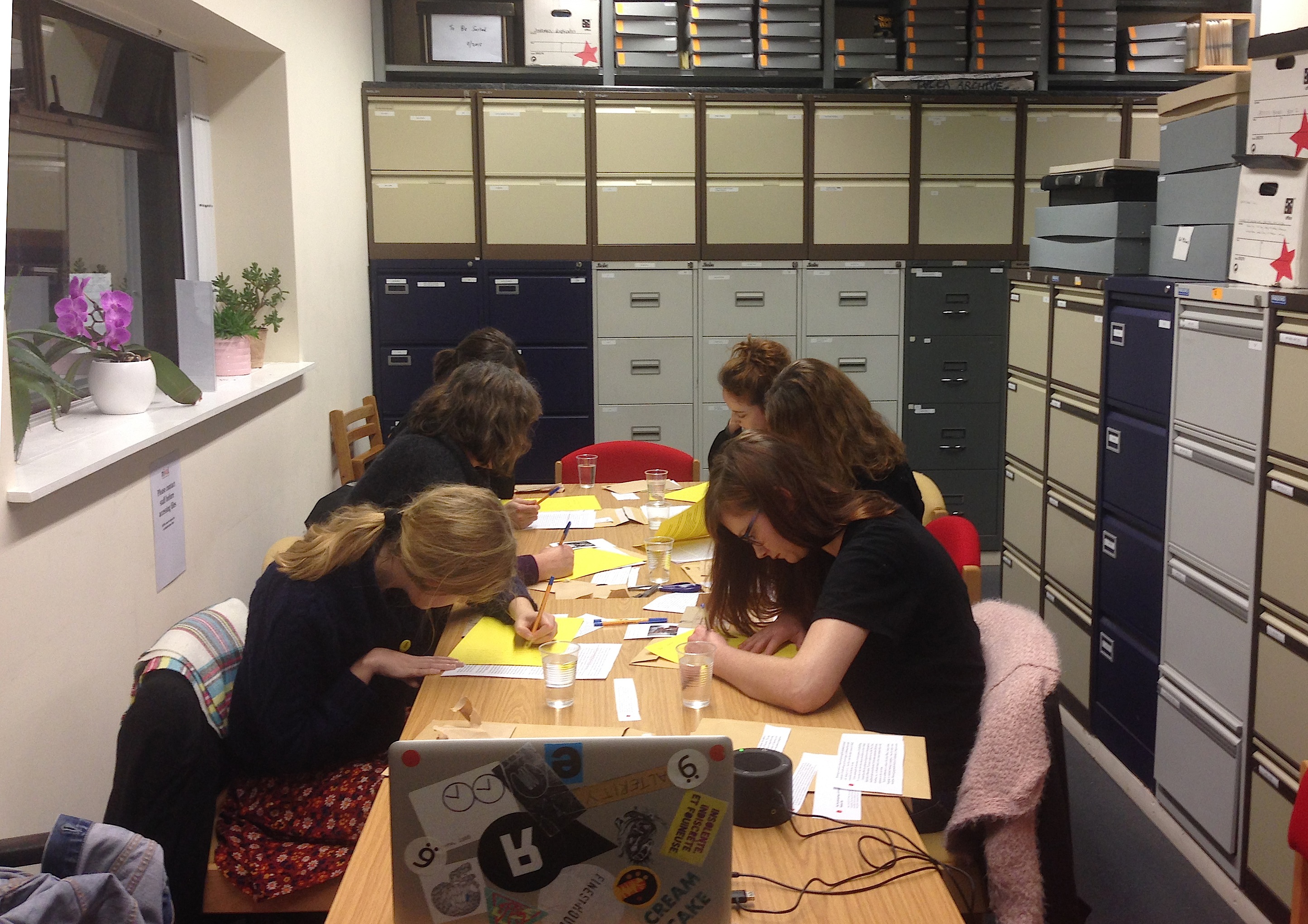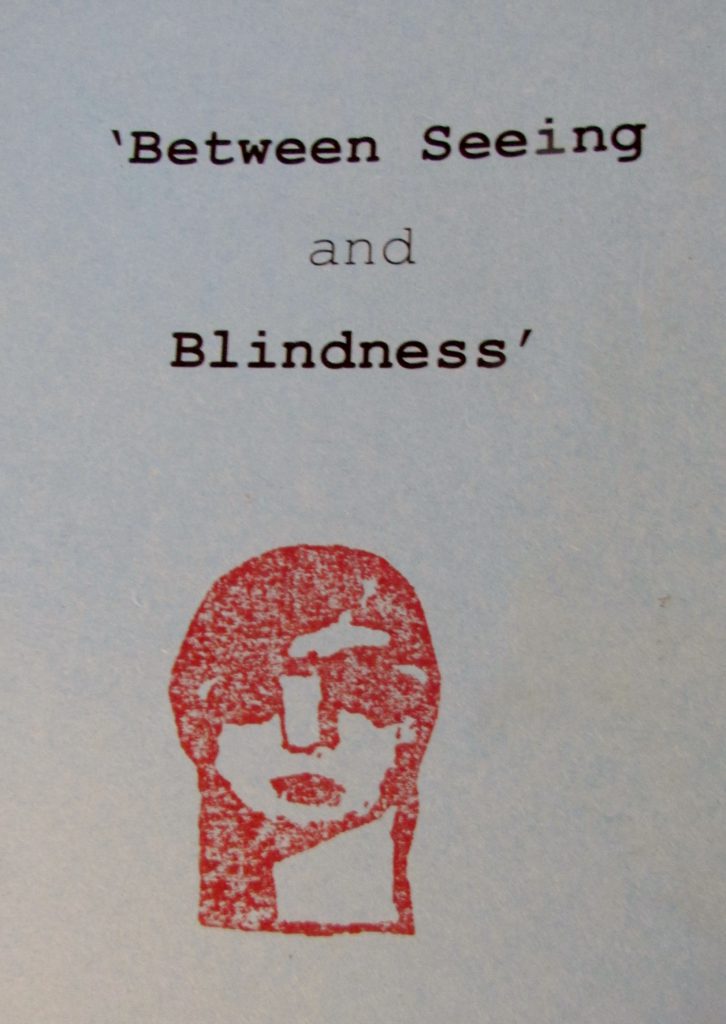The Cut-Up Method
The Cut-Up Method – Emma Haugh and Billy Dante
Re-use is creativity. For me the most interesting re-use in art is the use of already published texts. The use of cut-ups by artists has been prevalent since the Dadist Tristan Tzara wrote, To Make a Dadist Poem (1920). This explains the method of cutting up words from newspapers and randomly re-jigging them around before pasting them down in a new position on a sheet of paper. There have since been many variations on the cut-up, most famously William .S. Burroughs and Kenneth Goldsmith. Most employ methods that are less random that Tzara’s original formula and each artist has had an individual way of working. Burrough’s and Goldsmith consider themselves writers. However this type of writing can be quite visual. Currently in Ireland there are visual artists who work with text. Emma Haugh and Billy Dante, are two such artists who re-use texts inherently in their practices. They both seem to have stumbled accidently upon the idea of the cut-up. They use it to convey concepts, such as re-appropriation and abstraction.
Emma Haugh is a visual artist living and working in Dublin and Berlin. She has been working with theatre and photography for fifteen years. The Re-appropriation of Sensuality is a project she has been developing since 2013, as part of it she has facilitated Reading Troops. I attended Reading Troupe #6 at Nival in the National College of Art and Design held as part of her recent exhibition in NCAD Gallery in November 2015. On arrival each person in the group was given an envelope. Within the envelope were excerpts from texts – one longer, the rest shorter. There was also a photograph of Grace Jones we had to decorate and draw. The shorter text excerpts Haugh called Interruptions. We each had to read excerpts from the long text, in #6 this was Adolf Loos’s Ornament and Crime (1908). Whilst someone was reading, anyone else could spontaneously start reading one of their interruptions and the person reading the long text had to pause. The interruptions were snippets from books by Kathy Acker and Hakim Bey. The meshing of the three texts resulted in a fascinating reading. The interruptions questioned Loos’s ideas, particularly his patriarchical modernist aesthetic. Using the workshop ephemera Haugh creates zines. There is no exact record of #6, no record of when the interruptions were made, no record of the textual changes or the variety of voices. Haugh’s performative workshops are an example of ephemeral, rather than physical and permanent, cutting and pasting. These workshops are experimental and hard to pin down.
Billy Dante is a visual artist who graduated from Crawford College of Art and Design in 2014 and is doing a Masters in Interaction Design at the National College of Art and Design. One of Dante’s live art performances was featured in the ELIA Neu Now festival 2015 in Amsterdam. The piece performed for the festival is called O Vin Joe Gortna Julie Pat Silverheight. This is an abstract cut-up poem created using the 02 Phone Directory. Dante delivers it with a deep rhythmic voice that highlights the gorgeous guttural sounds of the words. All literal meaning is forgotten and in its place is a wave of sound and feeling. On listening it reminds me of Roland Barthes’ textual bliss in The Pleasure of the Text (1975). A text that produces a sense of confusion, unpredictability, and loss, that is unspeakable, beyond words, is a text of bliss. Two edges meeting and dissolving together. However it is also structured as a villanelle poem with a rhythm and a repeated chorus, which gives it limitations and adds solemnity. In a sense his piece is an ordered chaos. Dante has also presented the phonebook as a sculpture. The phonebook is the fulcrum of much of his poetry. The phonebook has been,though less so now, one of those everyday objects – easily obtained and thrown away, like the newspapers of Tzara’s time.
Vocally cutting into a text that is being read aloud like Haugh does in her Reading Troop events, create a moment of random re-appropriation. Making work that deconstructs meaning like Dante does by distilling words into streams of sounds. These diverse methods disturb the traditional notion of the linear narrative and burst into visual art. Both artworks are within a boundary, there is a limitation on what can be said, but these artworks are much more about interrogating pre-existing narratives or ideas in dynamic ways. The Re-appropriation of Sensuality and O Vin Joe Gortna Julie Pat Silverheight are deep interrogations that do not result in academic papers, but in engaging artworks.
http://billydanteart.wix.com/billydante
Words: Róisín Power Hackett
Featured image courtesy of Emma Haugh

